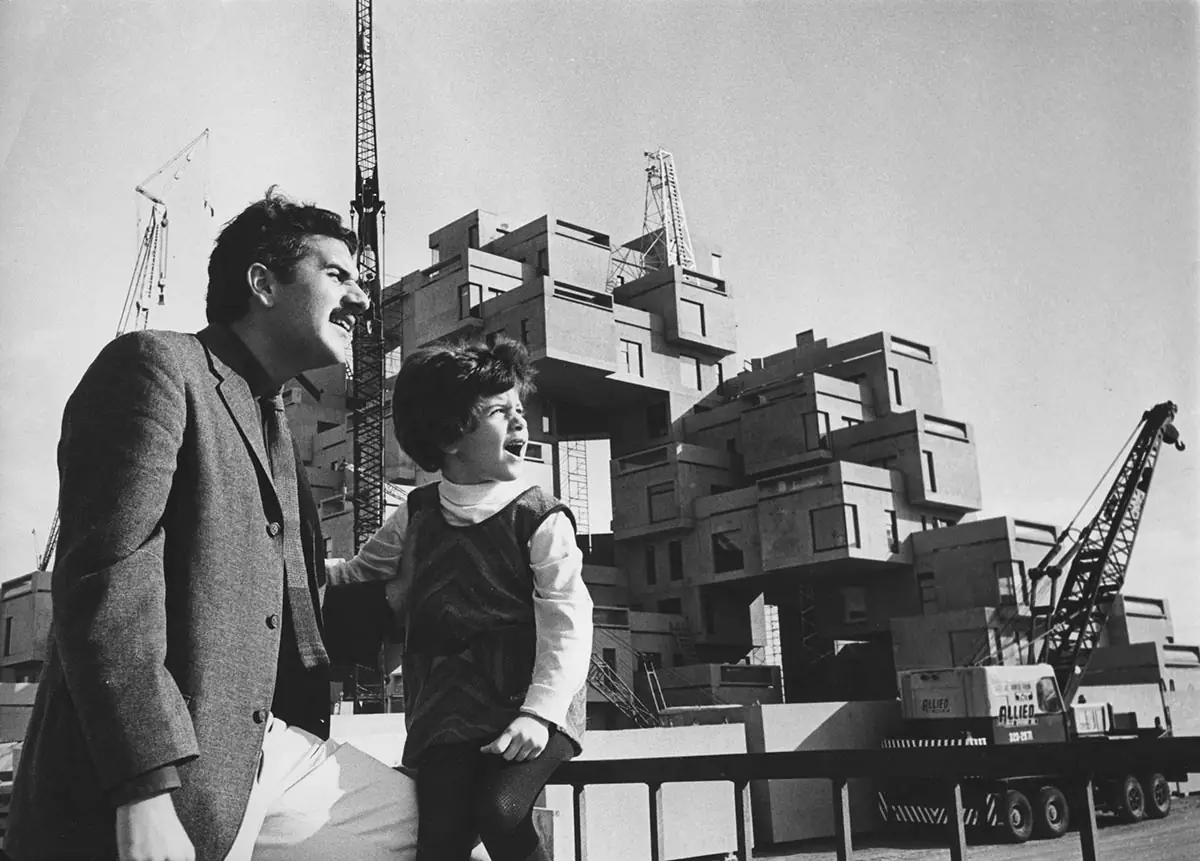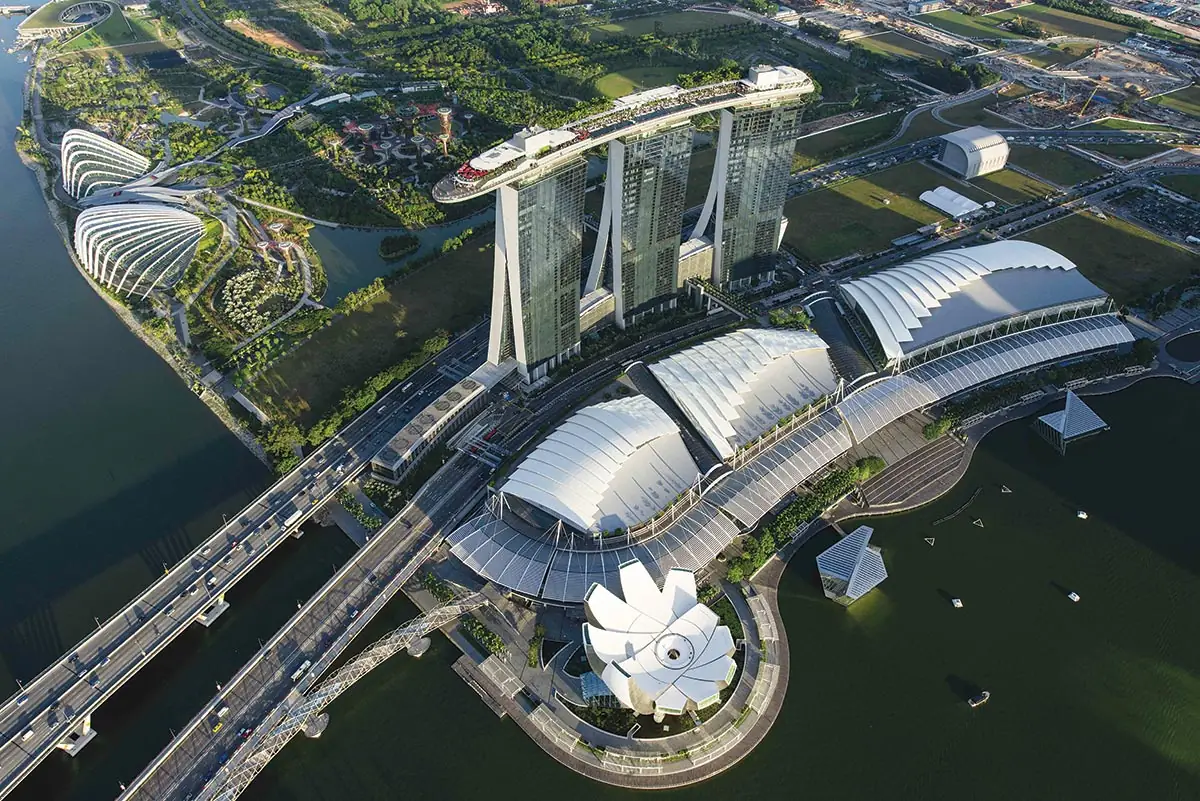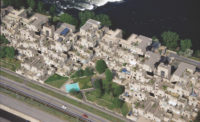A little more than a decade ago, my wife and I found ourselves seated next to the architect Moshe Safdie at a dinner held inside one of his best-known designs, the Skirball Cultural Center in Los Angeles. He was an unusually charming tablemate, full of engaging stories about his career and personal life, from a childhood in Israel to early professional success and later a turn on the faculty of the Harvard Graduate School of Design. He offered only a few piquant complaints about the critics who never warmed to his work or the big commissions that, for one reason or another, got away.
Safdie’s new memoir, If Walls Could Speak, reminded me of that conversation in its wit and amiability, if also in its general lack of interest in probing the more theoretical corners of the field. Written with help from The Atlantic magazine editor-at-large Cullen Murphy, it provides a highly readable, largely chronological overview of Safdie’s career, which bloomed early with the success of the Habitat residential complex at Montreal’s Expo '67, wilted somewhat in middle age, and has seen a remarkable revival over the last two decades, with megaprojects in Asia and civic and cultural commissions across Canada and the U.S., including the Crystal Bridges Museum in Bentonville, Arkansas.
After leaving Israel at age 14 for Montreal, where both the long winters and “somber” buildings came as a shock, Safdie enrolled in the architecture program at McGill. He then spent an intense year in Louis Kahn’s Philadelphia office, discovering in his boss a designer “methodically, systematically engaged in every phase of the architectural endeavor.” The title of Safdie’s book is meant, I’d guess, as something of a nod to Kahn’s own koan-like phrases about what materials and architectural details would say if given the gift of speech: “You say to a brick, ‘What do you want, brick?’”
Safdie found himself on the cover of Newsweek, to mark the opening of Habitat, when he was just 33. How the wunderkind began to realize that opportunities to build his most forward-looking ideas wouldn’t always present themselves so directly—and what he did with that hard-earned knowledge—is the theme that holds this wide-ranging book together more effectively than any other.
This is not to say that getting Habitat built was easy. It faced political and financial headwinds from the start. The full scheme was to have included 1,200 apartments, most of them filling concrete frames tilted one against the other to form a giant A-frame silhouette, with shaded public spaces running underneath and a smaller, terraced hillside village of stacked units at one end. It was this thoughtful gradient from private to semi-private to public spaces, along with the project’s striking formal and engineering bravado, that attracted so much attention when the design was first published: this was avant-garde and deeply humanistic architecture at the same time. Ultimately, just the village was realized, holding 158 apartments (one of which Safdie moved into with his first wife, Nina, and their two young children).

Safdie and his child at Habitat 67, under construction in Montreal. Photo courtesy Safdie Architects, MBS Visual Media, click to enlarge.
Even that truncated version proved an immediate triumph (and one that continues, 55 years later, to inspire young architects and urbanists). In The New York Times, Ada Louise Huxtable called it “a significant and stunning exercise in experimental housing that is also the most important construction at Expo, where architectural excellence abounds.”
That made the fallow period that followed especially tough: “After Expo, I had come to believe that the success of the first Habitat would bring many more Habitats to life. What was becoming clear to me, experiencing one disappointment after another, was that Expo had been a special, one-of-a-kind event. At least in North America, innovative projects in the ‘normal’ world would for a time prove maddeningly elusive.”
Safdie’s prose shares with his built work a certain disappointing resistance to the notion that lasting works of architecture might be driven as much by intellectual as material concerns. “Architecture,” he writes, “is a building art. It is a language made up of physical materials. It is not about abstract concepts that are verbal, or about visual images that can’t be translated into reality.”
It’s certainly reasonable to worry, as Safdie does, that an architecture too much in thrall to theory for its own sake can lead not just to jargon but insularity, walling the profession off from the world at large. But it’s striking how free of caveats his sentences are in this section; he leaves himself no outs. The phrase “abstract concepts that are verbal” seems practically spat out with disdain. Safdie seems much more comfortable in describing the projects that have been most personally meaningful for him, notably the 18th-century house in Cambridge, Massachusetts, that he and his second wife, Michal, bought in 1982 from Harvard and expanded twice.
Over time, the stubborn streak that gave a young Safdie the courage to take on Habitat’s many doubters has mellowed into something more flexible and pragmatic. Despite what Safdie calls “great differences in our temperaments and politics” between himself and the arch-conservative developer Sheldon Adelson—especially when it comes to the Israeli-Palestinian conflict—the architect produced a smashing success for Adelson with the Marina Bay Sands resort in Singapore, a design that has become a kind of logo for the ambitious city-state and is topped by what is perhaps now the most famous infinity pool in the world, as viewers of Crazy Rich Asians well know. I have not been able to fact-check this claim, but Safdie proudly calls it “the most profitable architectural project ever built.”

Marina Bay Sands resort in Singapore. Photo courtesy Safdie Architects
His reward, a few years later, was a $50 million lawsuit from Adelson claiming that one of the firm’s subsequent megaprojects, in the Chinese city of Chongqing, resembled the design for Marina Bay Sands too closely: “In effect, he sued me for stealing my own idea.”
Safdie prevailed. It was a bitter episode, but a client with deep pockets is a client with deep pockets. He and Adelson have reconciled. “We are currently at work,” Safdie reports, “on the Marina Bay Sands addition.”



Post a comment to this article
Report Abusive Comment